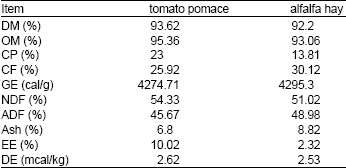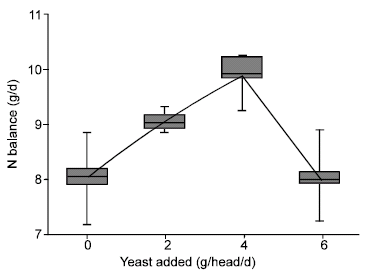Research Article
Effect of Yeast (Saccharomyces cerevisiae) on Apparent Digestibility and Nitrogen Retention of Tomato Pomace in Sheep
Department of Animal Science, Center of Agricultural Education, Kerman, Iran
M. Rashidi
Department of Animal Science, Faculty of Agriculture, Jordan University, Jerash, Jordan











